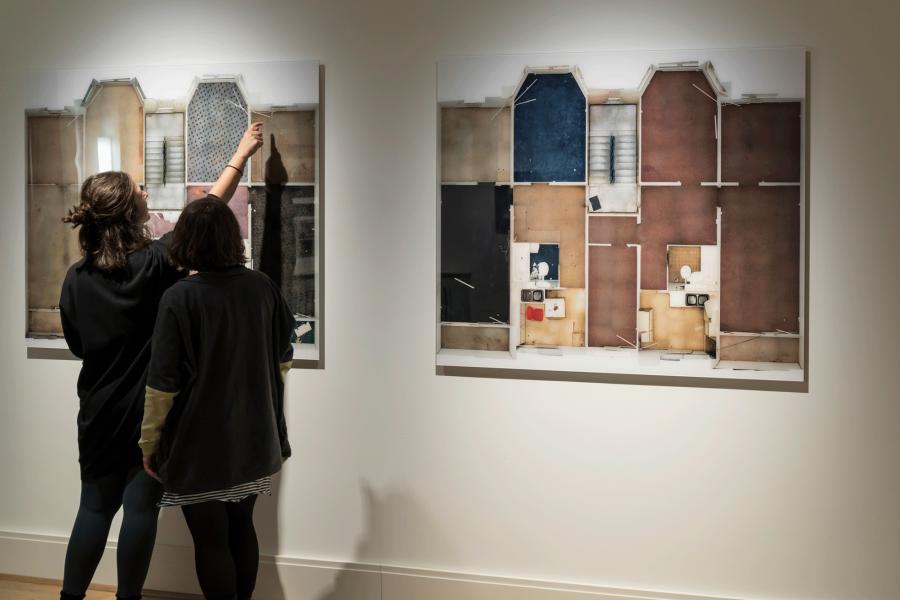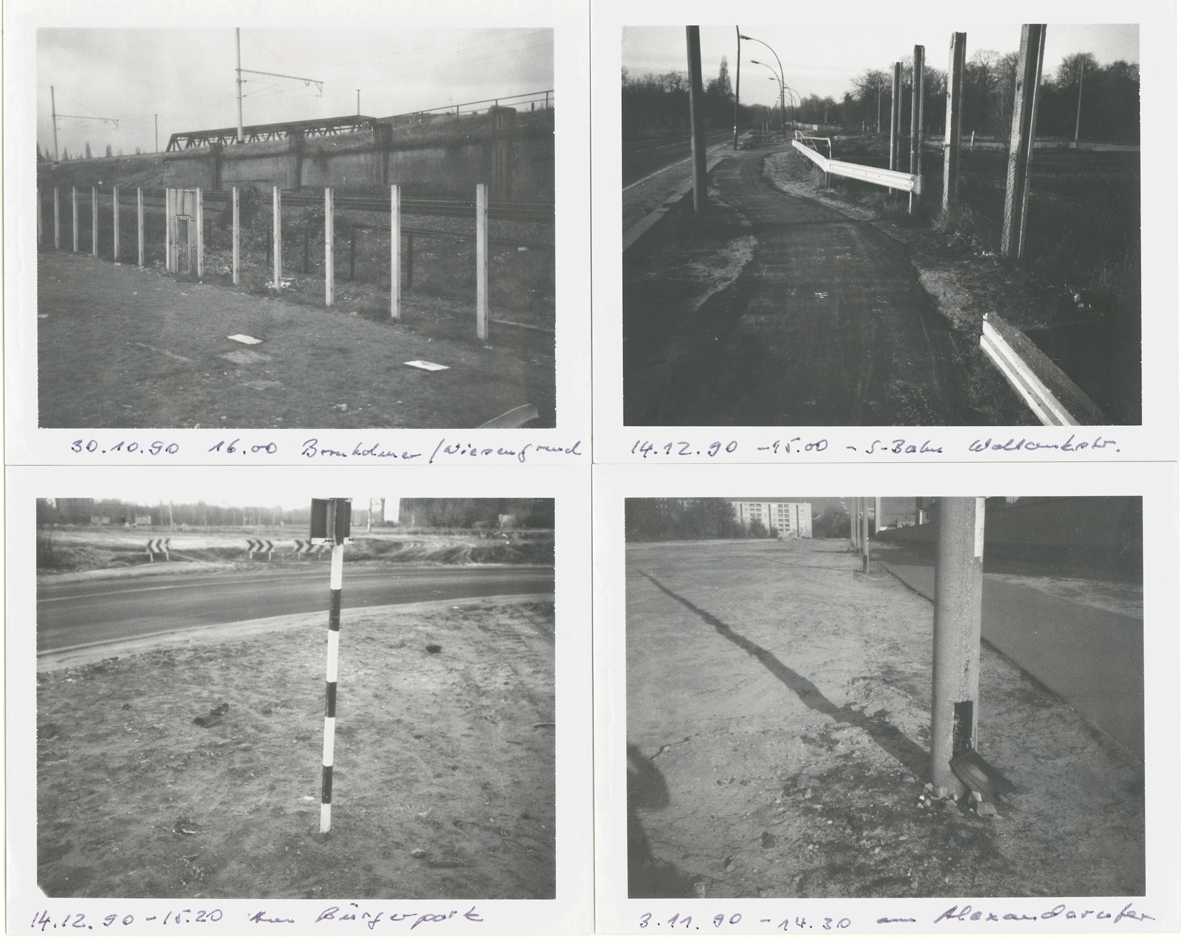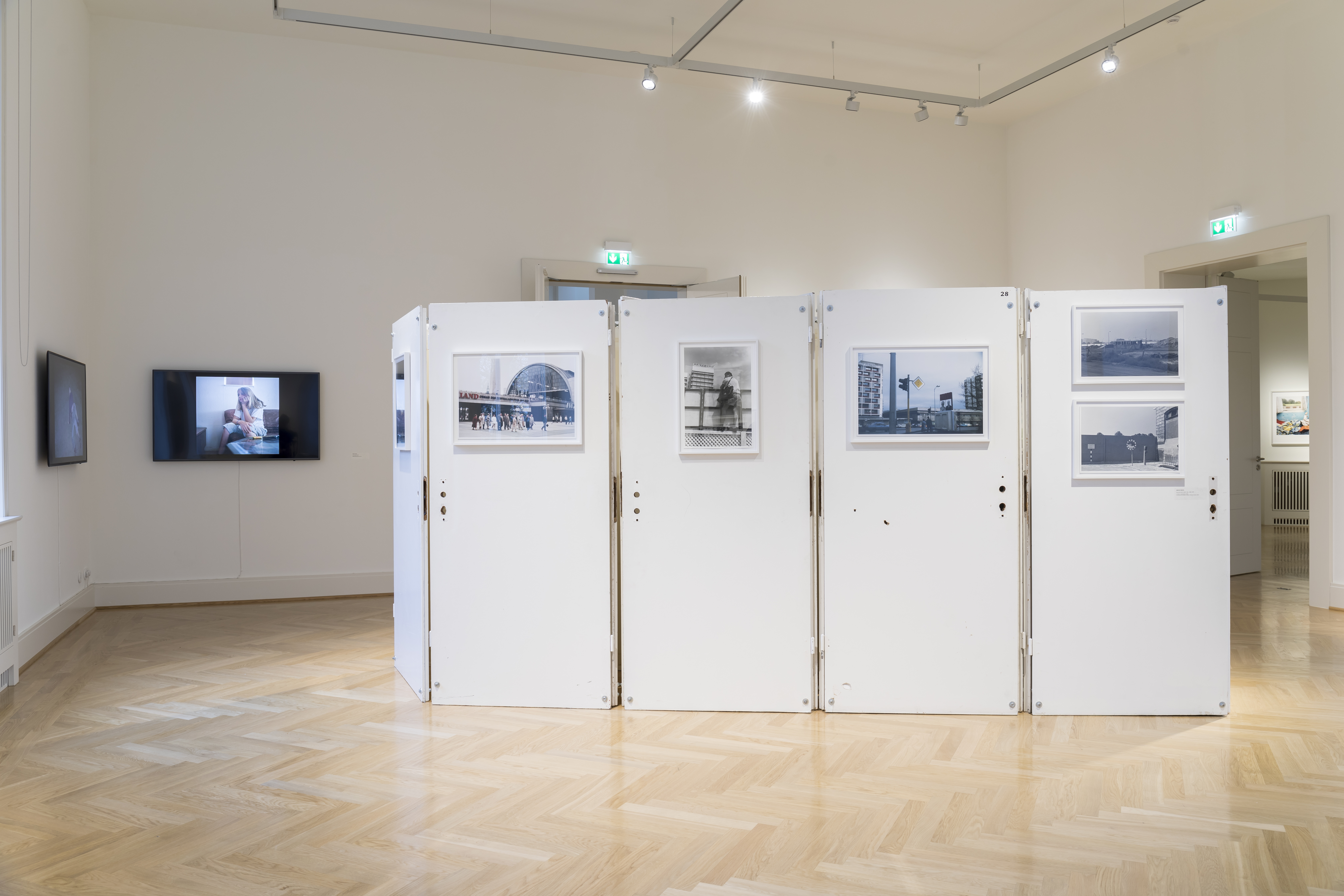'Blickverschiebung/Shifting Perspectives' at ZKR-Centre for Art and Public Space
'Blickverschiebung/Shifting Perspectives' at ZKR-Centre for Art and Public Space

Blick Verschiebung is the third and final exhibition at Centre for Art and Public Space (ZKR) at Schloss Biesdorf. A recent press release revealed that ZKR will say goodbye per February 1st to its current building and move to a still unknown new location. The institution is focused on displaying international contemporary art alongside art from the former GDR. Current debates on the influence of the GDR period, and how to present an unbiased debate on the quality of art and artists associated with the GDR are being discussed. We spoke with the curator and director of the institution, Katja Aßmann, about the multiple perspectives the exhibition has to offer on this specific time period.
The title Blick Verschiebung can be roughly translated into Shifting Perspectives, and already offers a small introduction to the exhibition’s content. The title refers to the shifting and transformation of public spaces during and after the GDR period, as well as socialism’s influence on capitalism, and questions the different ways of presenting and documenting history.
The exhibition brings together the works of 22 artists (mostly photographers) build from the collection of the Brandeburgischen Landesmuseum for Modern Art. Blick Verschiebung presents a thoughtful selection of photographs and video works that reflect on the change in perspectives and history of public spaces in East Germany since the 1980s.
One of the first works we see are photos of German photographer Alexander Janetzko. The black and white images, are captures of his own ‘heimat’ in the south of Brandenburg. The works conceive images of landscapes and architecture, and transform into new images that can be seen as something between an abstract documentation of his youth and his imagined version of it.

Polaroids by Manfred Paul from the series Tableau Mauerfall, 1989-1990. Courtesy: Manfred Paul
The subsequent room also contains black and white photographs -- this time, polaroids by Manfred Paul. Several images from the destruction of the Berlin Wall are shown as a photographical diary of something that no longer exists. Almost in a melancholic way, Paul tries to offer a view into the everyday moments of the Berlin streets from 1989 until 1990.
On the other side of the walls, hang the graduation works of Paul’s former student, Tobias Zielony. The contrast between the works of teacher and student cannot be more obvious. Where the works of Paul do not consist of any human beings, Zielony confronts the viewer with people at the center of his photographs -- often showing young adults in public spaces that lack function. The photographs are part of a larger series of portraits depicting the ‘everyday lives’ and social interactions of young adults in Berlin, Cologne, Halle Leipzig and other East-German cities.

Installation view: Sven Gatter, Luft Schiffe I, 2015, from the series: Blütezeiten, Photographs and Texts since 2010. Image credits: Frank Sperling.
Born in the 1970’s, the artist Sven Gatter belongs to the so-called third generation of East Germany. In his photo and textual works - presented as an installation, he looks for the memories and stories of his ‘heimat’. Through notes he took from conversations with natives, his own memories and other found research, he builds refined narratives around the landscapes of his hometown, Bitterfeld. Gatter’s work includes text and abstract photos that, in combination with the title of his work, Blütezeit, reveal to not only presents a historical perspective, but also hopes for a new future.
Seiichi Furuya’s intention to photograph his daily life in East Berlin during the GDR is also related to his personal memories -- with specific reference to his wife’s suicide, which occurred in 1985. The photos capture private settings, as well as images from the streets. We roam from buildings to views of people walking on the streets, and then to domestic settings -- which seem to directly link to Furuya’s personal memories of these locations. The emotional burden is visible; however, any emotional attachment is avoided through the timelessly composed imagery.

Exhibition view: installation by raumlaborberlin, works by Tobias Zielony and Seiichi Furaya. Image credits: Frank Sperling.
A common thread that can be seen through the exhibition space is old wooden doors in various forms, such as bookshelves, benches and an enormous room installation that extends to the second floor. The objects are designed by raumlaborberlin, a group of architects that often work to reactivate the ideologies, systems and time within forgotten spaces. The installation started in Halle-Neustadt with the art project Hotel-Neustadt, including doors from former living houses/homes in prefabricated buildings. The doors at Blickverschiebung come from the plattenbau houses of the Funkhaus on Nalepastrasse, Berlin. By contextualising the doors, they open new narratives on forgotten spaces and continue to tell the story of a historical time period in East Berlin.
Through photographs and video works, Blick Verschiebung reflects on the changes of a time period that still has a strong influence on the present. By showing us a variety of perspectives from different photographers, we not only see a diverse documentation of experiences, but come to realise that each person sees the world, and history, through different eyes.
***
Blick Verschiebung
ZKR-Centre for Art and Public Space
The exhibition will continue until further notice.
More info